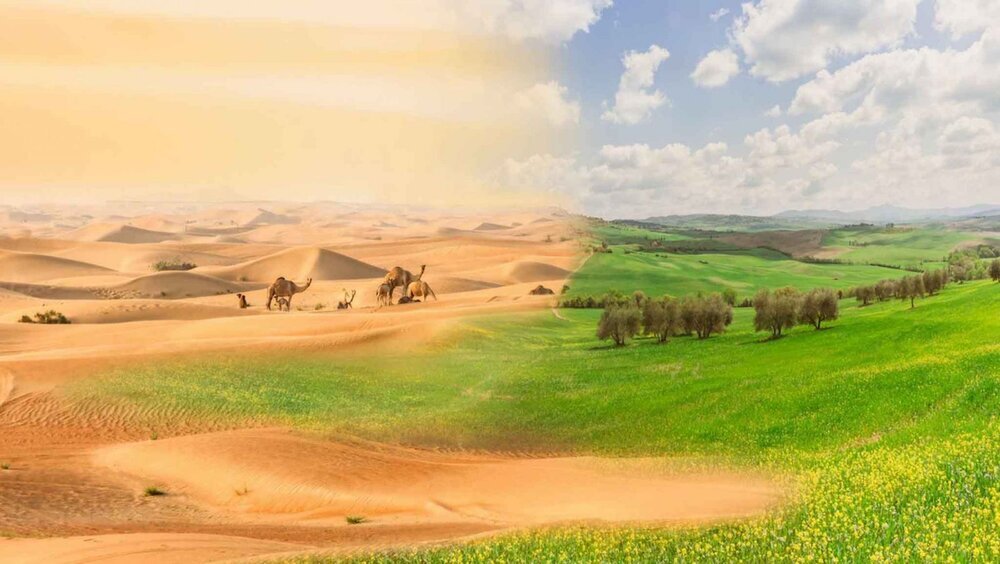Desertification and how to deal with it

Desertification comes majorly from overexploitation of underground water resources and contamination of water through releasing industrial and agricultural waste into the environment.
Human activities are a primary cause of desertification. These activities include overgrazing of livestock, deforestation, over-cultivation of farmland, and poor irrigation practices.
Considering that Iran is located in an arid and semi-arid area, its vegetation is threatened by climate change and declining precipitation year by year.
Iran is home to about 3.8 percent of the world’s total desert areas. Some 61 percent of the country’s area is covered by arid and semi-arid lands, which is 3.1 times the global average.
Deserts are arid ecosystems that receive fewer than 150mm of precipitation a year.
Iran is home to about 3.8 percent of the world’s total desert areas. Some 61 percent of the country’s area is covered by arid and semi-arid lands, which is 3.1 times the global average.The amount of evaporation in a desert often greatly exceeds the annual rainfall. In all deserts, there is little water available for plants and other organisms.
Many countries are working to reduce the rates of desertification. Trees and other vegetation are being planted to break the force of the wind and to hold the soil.
Iran is home to about 3.8 percent of the world’s total desert areas. Some 61 percent of the country’s area is covered by arid and semi-arid lands, which is 3.1 times the global average. The Desert ecosystem accounts for 43.7 million hectares area of the country’s land.
Meanwhile, 20.2 million hectares area of the desert ecosystem is affected by wind erosion, of which 7.6 million hectares are in critical condition.
Overgrazing livestock compact the soil, preventing it from absorbing water and fertilizers. Agricultural production is devastated, and the economy of a region suffers.
Between 2015 and 2020, approximately 12,000 hectares of forests across the country have been wiped out annually, the Forests, Range, and Watershed Management Organization has said, putting the country’s forests at 14.3 million hectares.
To deal with the problem, the Organization has launched two comprehensive plans to mitigate desertification.
These projects include watershed management, aquifer, flood control, desertification, forest development, rangeland rehabilitation, conservation, and support projects aimed at conserving water and soil, protecting vegetation, preventing erosion, and reducing drought and nutrition damage.
The national budget bill for the current Iranian calendar year 1401, which started on March 21, has allocated 16 trillion rials (about $53 million) for watershed management, which is nearly fourfold the budget for the previous year.
MG
Leave a Comment